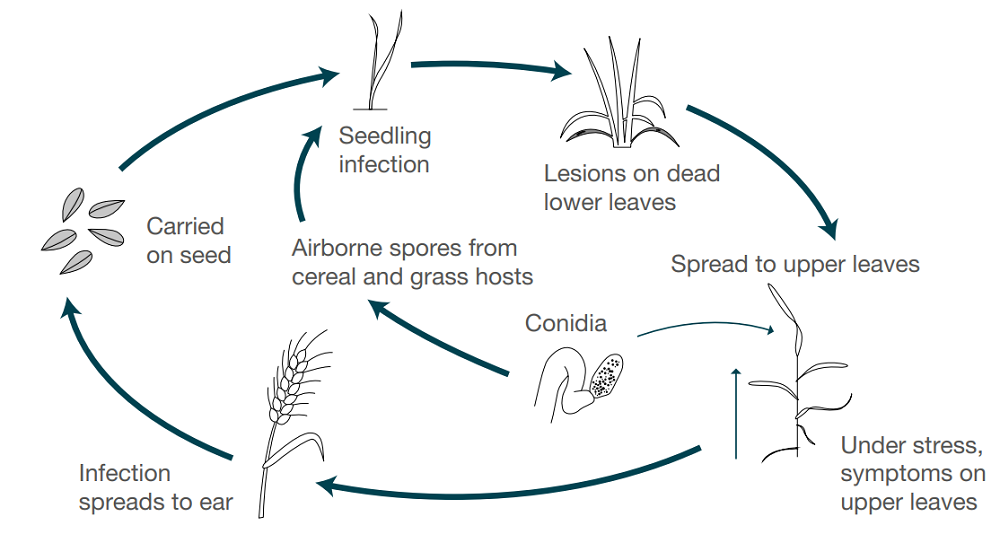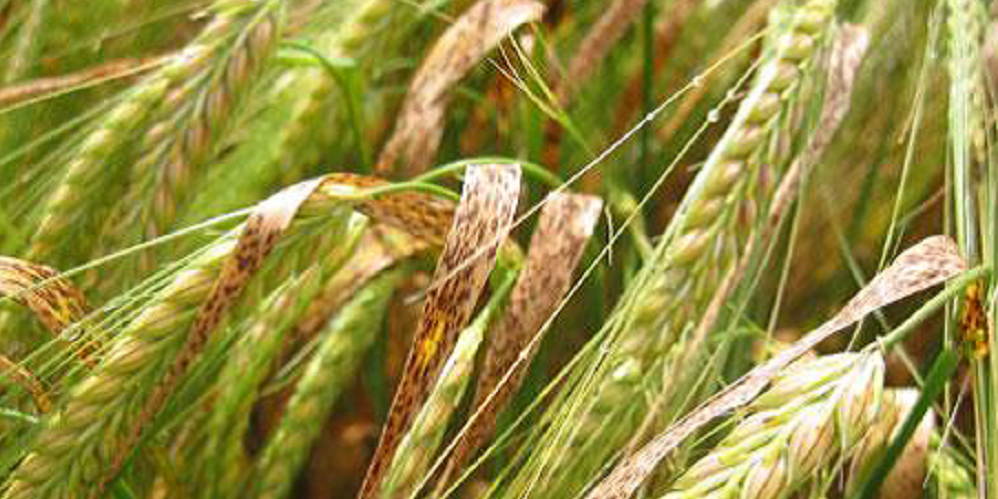- Home
- Knowledge library
- Ramularia leaf spot management in barley
Ramularia leaf spot management in barley
A lack of chemistry and varietal resistance, in addition to poorly understood symptoms, make ramularia leaf spot one of the hardest diseases to manage in barley. Caused by the pathogen Ramularia collo-cygni, our guidance will help you recognise and reduce the impact of the disease.
How does ramularia leaf spot affect barley crops?
Ramularia leaf spot can result in extensive damage to the upper leaves in barley, leading to losses in grain yield and quality. In heavily infested crops, yield loss can be up to 0.5 t/ha. Symptoms have been reported with increasing frequency, with the disease most common in the UK’s northern regions. Though previously associated with spring crops, evidence of ramularia in winter crops has increased in recent years. Ramularia is probably still underreported, due to unfamiliarity with the symptoms.
Infected seed or airborne spores, released from cereal and grass hosts or crop trash, result in diseased crops. The relative importance of the seedborne and airborne phases of infection, and the interactions between ramularia leaf spot and the host plant, are complex and not fully understood.
Initially, the fungus grows symptomless and systemically within new plant growth. Diagnosis during these stages requires molecular approaches. Symptoms usually appear on the upper leaves after flowering, but can show earlier in stressed crops or on senescing leaves.
Although primarily a disease of barley, the fungus can infect wheat and oats, but the incidence and significance of this is unknown.
Ramularia leaf spot in barley life cycle
 AHDB
AHDB
How to identify ramularia leaf spot symptoms in barley
Ramularia leaf spot management
Although seedborne, ramularia is not controlled effectively by seed treatments. Avoid farm-saved seed from crops with high levels of ramularia symptoms.
How to identify ramularia leaf spot symptoms in barley
The most effective timing for fungicide applications against ramularia is a preventative spray during booting (growth stages 45–49). Later applications, up to ear fully emerged (growth stage 59), may also be effective but may be restricted for malting barley crops. Once symptoms develop on the upper leaves post-flowering, treatment is not effective.
Ramularia developed resistance to strobilurins some years ago. Recently, there has been some evidence of resistance to azoles and SDHIs. Multisite fungicides are particularly important in fungicide programmes. The multisite chlorothalonil was an important component of the barley spray programme for many years, until its final withdrawal from use on 20 May 2020.
Fungicide performance data
Our fungicide performance work provides high-quality, independent information on the relative efficacy of fungicides against key diseases in wheat, barley and oilseed rape.
Fungicide performance data is available for ramularia
Develop a fungicide programme for barley
A complex set of environmental and genetic factors drives the development of visible ramularia symptoms in barley. Due to the level of complexity, it is not possible, at present, to generate robust varietal disease resistance ratings for inclusion within the AHDB Recommended Lists (RL).
Further information
Cereal disease management homepage
Disease risk
.PNG) AHDB
AHDB
Disease risk |
||
| High | Moderate | Low |

Topics:
Sectors:
Tags:

